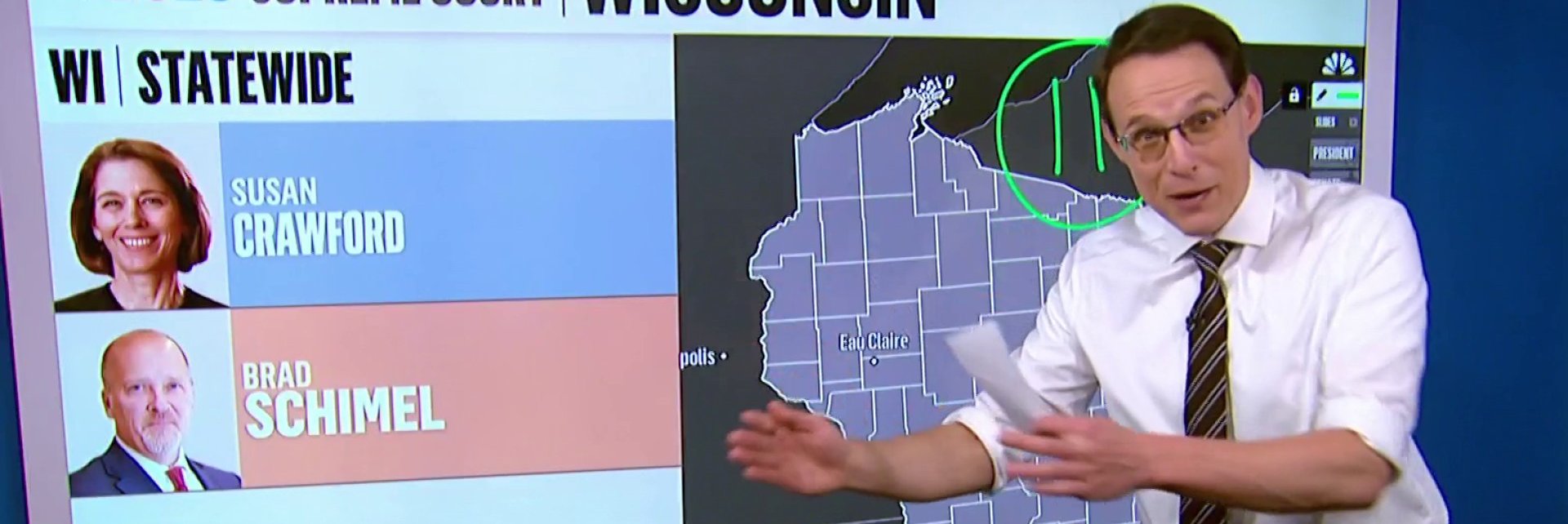I’ve watched Steve Kornacki highlight the least important aspects of vitally important elections to drive worn-out tropes and the status quo for way too long. Dude dismisses turnout in every “authoritative pronouncement” of what the numbers “really” mean to the end results. Fifty-fifty elections are far more dramatic than a more nuanced view of the data. MSNBC is my go-to for news reporting but this continued reliance on mediocre election analysis is beyond maddening. Their supposed “data guru” isn’t the only media talking head delivering tissue-thin hot takes. It’s endemic across every important topic on every lackluster network.
The 2025 special elections and how they might impact future democratic efforts takes a much deeper dive into the data. I might even explain my unpopular opinion that the 2024 election wasn’t “hacked” by some supposed tech bro genius. That particular crime is far more complex than the conspiracy theories suggest. At best, he realized that dumping $250 million of ad buys into very specific districts and demographics could win the electoral college and perhaps even the popular vote without breaking a sweat or even a single law. That weakness has been there for decades. I’ve been writing about it for years.
Even a small bump in turnout for very specific races during very specific years wins the day every time. The math isn’t that hard. I’m shocked after every election that a whole lot of smart people just don’t see it. This blind spot in both the electorate and the elected is especially frustrating for a data geek with a political ax to grind. What’s interesting this year is the close proximity of special elections in two ruby red Florida districts to a presidential election that introduced massive chaos into our lives as well as unprecedented and illegal actions by an unelected billionaire wielding a chainsaw. Literally.
Take Florida’s sixth district. The republican incumbent won the race by 30 points in 2024 with 60% turnout. When that representative was appointed to the new administration’s cabinet, it set the stage for the special election on April 1. While the democrat was able to cut that margin in half, he still lost as expected. However, looking at the turnout for the district paints a much different picture. About 25% of eligible voters turned out for the special election. A mere 5% bump in turnout by democrats, bringing their numbers up to around the 2024 turnout, and that seat flips by 12,000 votes.
By way of contrast, Wisconsin had a special election for the state supreme court on the same day. In 2024 the state saw a whopping 72% turnout for the presidential election and flipped to the republicans by a mere 30,000 votes. Biden won the state in 2020 by 20,000 votes with a turnout that was 100,000 fewer votes cast than in 2024. A 1% shift toward the republicans led to a dramatic turn of events. On April 1, 52% of the voters turned out for a special election that saw unprecedented interference from outside groups. Millions of dollars to win a seat that was lost by almost 250,000 votes.
This is where most election analysis falls flat. They approach each race as if turnout doesn’t impact results. They take partisan gerrymandering as a fait accompli before they even look at the data. This almost certainly drives down turnout, especially in red districts where the myth of their dominance is manufactured by those in power to stay in power. They are deathly afraid of democrats and left-leaning independents making a connection between turnout for midterms, primaries and special elections and the outsized influence that even tiny percentages of increased enthusiasm can make on the outcomes.
What these numbers tell me is that every district is competitive given the right strategies and tactics. If I were running the DNC, I’d focus on flipping MAGA districts during midterm primaries. Find and support a moderate republican to challenge MAGA incumbents and encourage democratic voters to turnout for those contests. At the same time, run moderate democrats in those districts without a challenger, preferably a veteran, who keep their powder dry until November. Using this model, the true nature of American politics can emerge and establish a new baseline for a more reasonable political debate.
I’ll conclude with the absurd notion that the 2024 election, or any other election, was hacked. Given the complexity and variety of voting regulations and systems across all 3,144 counties in the United States, walled off from the Internet and randomly audited by hand to ensure the accuracy of machine counts, the idea is ridiculous on its face. That being said, given the narrow margins in most “swing” states, it would be relatively simple and perfectly legal to influence the presidential election using the bottomless pockets of a mad billionaire with delusions of building a fascist empire by way of elevating a puppet king.
There is a silver lining. The math doesn’t lie. We The People can flip this entire fucking script anytime we decide to show up and make our voices heard.


